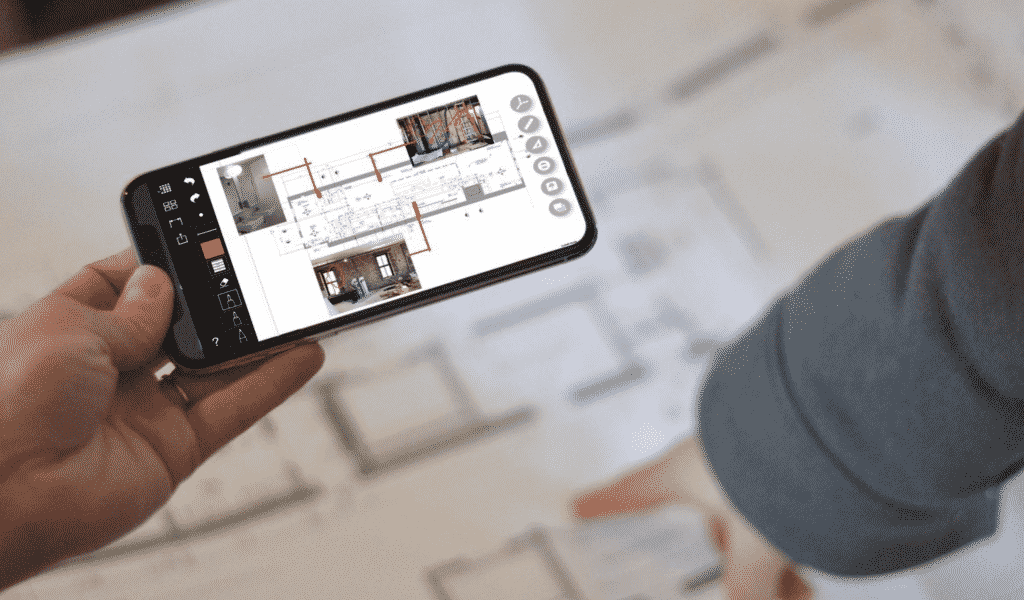It’s safe to say that many different parts of construction as a process have been able to benefit greatly from various technological advancements. Architects are not exempt from this, either, using many different ways to improve their quality of life and deal with some of the long-standing problems in the field.
A big part of this progress has been the widespread introduction of various architecture apps, allowing for a lot of important operations to be done from anywhere. The popularity of the architecture app market has been increasing for a while now, and it might be problematic to find something for your specific purpose.
There are many different applications available for architects right now, offering a plethora of different features, with different levels of user-friendliness, and so on. Some apps are just mobile versions of standalone architectural software, with or without some of the features being cut off in the process of adaptation. Other apps are completely new and made from scratch, offering unique capabilities that previously may or may not have had a requirement for a specific architect tool to be used.
The first and obvious category of architecture-related apps that we can easily define is all about sketching. Sketching apps for architects offer an unprecedented ability to create sketches and rough drawings, as the name suggests. There are also many different capabilities that can be thrown into the mix, as well, since a lot of sketching apps also include other features.
For example, a popular feature for most sketching apps for mobile devices is the ability to use Augmented Reality (AR) to scan real-life objects and surfaces and use them as part of your sketch, or to comment on something specific. Strictly speaking, the introduction of the latest-gen devices from Apple split this category into two different ones.
The first category uses AR the old-fashioned way – by utilizing the abilities of your built-in camera to locate and save objects and surfaces. It has improved drastically in recent years, mostly because of how widespread good camera modules became for mobile devices, but it can still be wrong sometimes, and often does not offer any kind of depth to your sketch.
The second category is somewhat smaller than the first one, and it requires the device to support the specific technology called LiDAR. LiDAR (Light Detection and Ranging) is an active laser-based system that excels at figuring out the distance between the device and other objects.
It is far more accurate as a distance measuring tool than the conventional way of using your camera, and it can add a lot of depth to your sketches from the get-go, but there are only a few Apple devices that support it so far, and all of them are fairly new, so it’s not as widespread yet.
On the topic of scanning areas to generate sketches and plans, some applications also support Bluetooth laser scanners for that process to make it more accurate. This kind of approach is often seen as an alternative to LiDAR for devices that don’t have it.
Stepping away from sketching and floor plan generation, there are also many different applications that allow you to straight-up open full-fledged plans and view them, be it ArchiCAD files, Revit files, Blender files, and more. It’s not uncommon for these apps to also have some other features that discern them from all the competition, be it the ability to create presentations, the ability to comment suggestions for models, and so on.
That’s not to say that all of the apps are only suitable for project viewing when it comes to activities that can be done on the go, and on-site. For example, there are field report apps that let you create detailed reports using templates, voice-to-text, Gannt plans, and more.
Some applications in the same field also act as a part of a massive Integrated Collaboration Platform, allowing users to interact with each other and with the project itself at all times. In this context, architect apps offer project viewing, issue tracking, real-time collaboration, and more.
There’s also a relatively different category of architect apps that only includes smaller, case-specific applications. The reason for them to be in the same category is because a lot of them offer unique or rarely-seen features. Some of these features can sound relatively simple, and yet there are little to no similar offers on the market.
There’s an app that shows you the position of the sun in both 2D and AR, an app that allows you to map entire areas using your device’s GPS and a satellite map, an app that is made specifically for people and companies that use drones for project visualization – and many other examples.
Of course, each of these apps have its own name, and some of these are in the list of the best architecture apps for iPhones and iPads. You can learn more in our article about app for architects.

